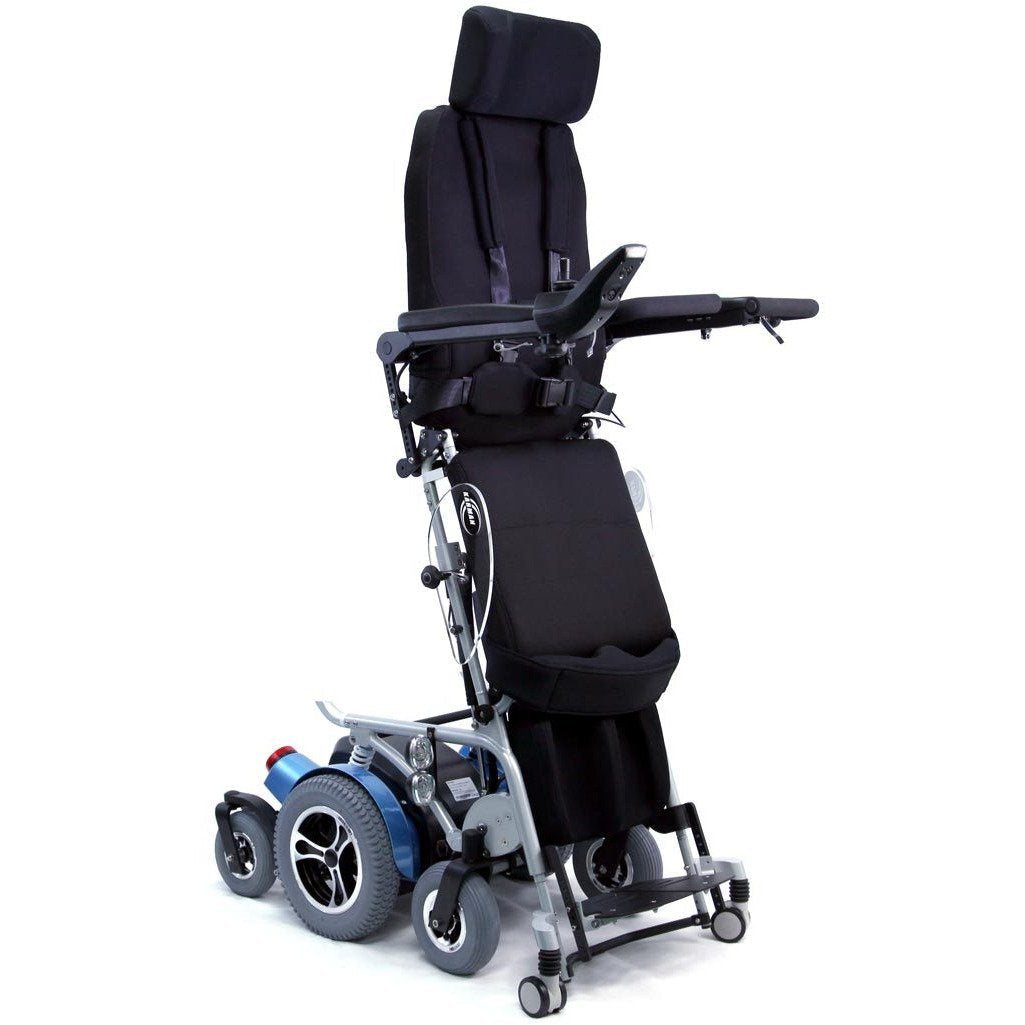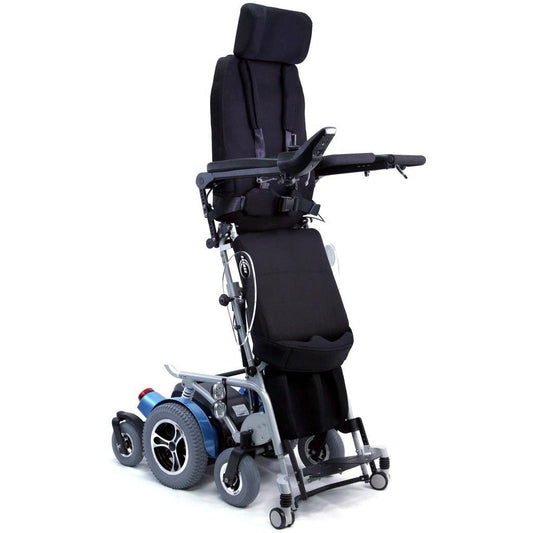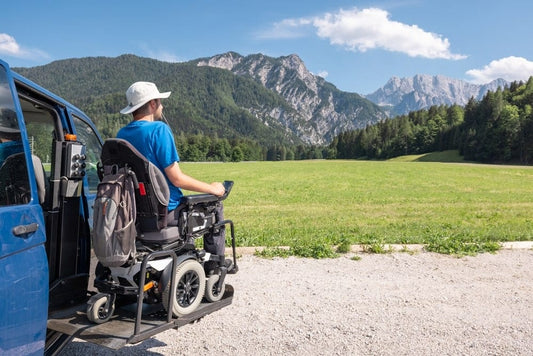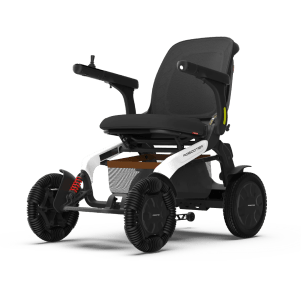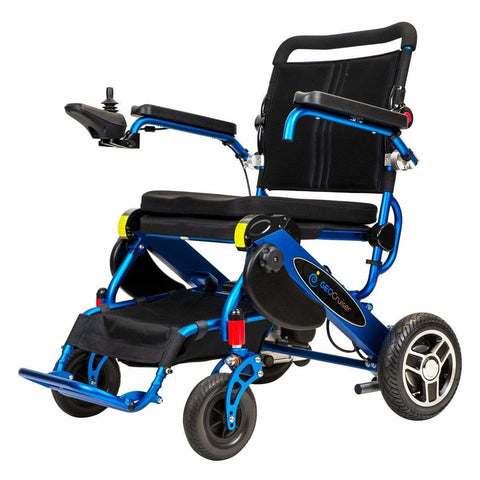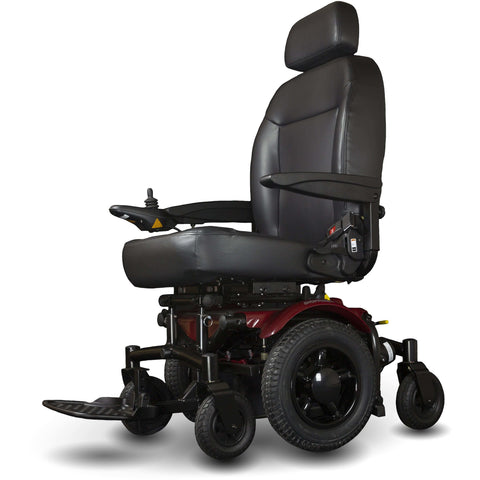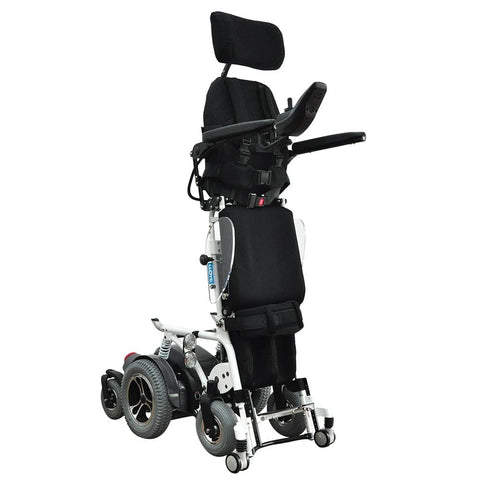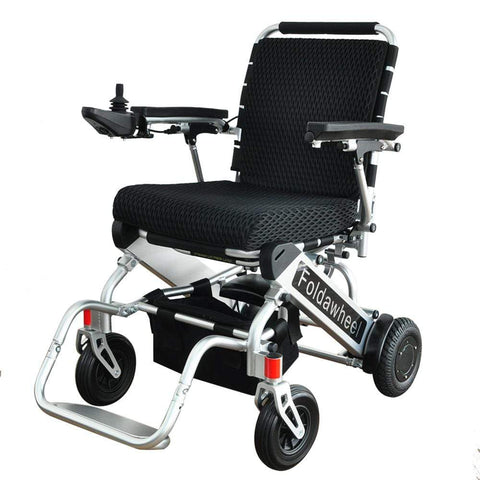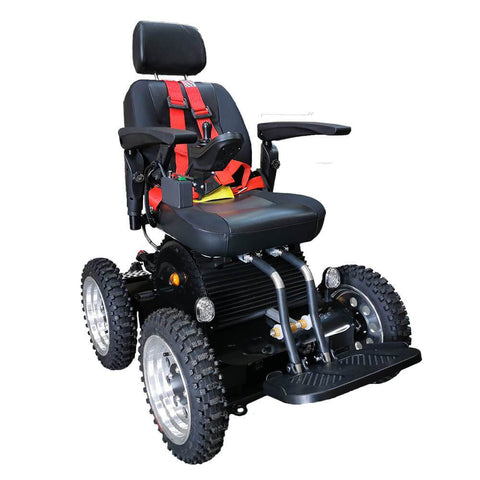A growing number of individuals with mobility impairments are turning to advanced mobility devices like stand-up wheelchairs to experience unparalleled functionality and independence. Modern wheelchairs that help users stand are more than an innovative response to mobility challenges—they serve as tools to enhance physical health, facilitate daily tasks, and promote social interactions.
What Are Stand-Up Wheelchairs?
Stand-up or standing wheelchairs are advanced mobility devices that enable users to elevate into a standing position safely and independently. Whether manual or powered by electric mechanisms, these chairs provide users with greater autonomy and access to environments designed for those who can stand.
These mobility solutions use sophisticated engineering to ensure safety and stability when transitioning from a sitting to a standing position. From built-in harnesses to customizable settings, stand-up wheelchairs cater to individual needs and circumstances.
Their usage is not merely limited to mobility; they provide numerous physical, psychological, and social benefits for wheelchair users.
Enhancing Daily Life Through Stand-Up Wheelchairs
1. Improved Access to Environments and Tasks
One of the most evident benefits of stand-up wheelchairs is that they enable users to access items, environments, and spaces initially designed for standing individuals. Tasks that would otherwise require assistance become independently achievable:
- Reaching Higher Spaces: From kitchen cabinets to top shelves, wheelchair users can easily access hard-to-reach areas in their homes or workplaces.
- Household Chores: Cooking meals, doing laundry, and cleaning are made more convenient while standing.
- Workplace Integration: Standing wheelchairs support users in professional settings by granting access to standing desks, industrial equipment, or files stored above head height.
The inclusion of standing features creates opportunities for improved interaction with environments once considered inaccessible.
2. Physical Health Benefits
One of the more understated advantages of stand-up wheelchairs lies in their health benefits. Long hours of sitting in traditional wheelchairs can lead to several complications, such as poor circulation or pressure sores. Stand-up wheelchairs counteract these complications by enabling users to shift positions, alleviating discomfort and promoting overall health.
- Improved Circulation: Standing stimulates blood flow, reducing the risk of blood clots that can occur due to immobility.
- Reduced Pressure Ulcers: Frequent position changes can decrease the likelihood of developing sores caused by prolonged sitting.
- Bone Density Management: Weight-bearing performed in a standing position helps counteract osteoporosis, strengthening bone density over time.
- Muscle and Joint Health: Standing stretches muscles and joints, aiding flexibility and combating the stiffness typically associated with wheelchair use.
Thus, the act of standing is not merely functional—it is therapeutic.
3. Support for Educational Pursuits
For students using wheelchairs, a stand-up chair can bridge barriers to educational engagement. By enabling access to standing desks and participation in group activities, these wheelchairs improve students' overall mobility and convenience in school settings.
Additionally, scientific research has shown that varying one's posture between sitting and standing positively impacts concentration and productivity. This advantage is particularly critical for students who may otherwise struggle to remain engaged over long periods.
4. Fostering Social Interactions
The psychological and social impact of standing wheelchairs cannot be overstated. For many wheelchair users, conversing with others while in a seated position can create feelings of inequality or exclusion. Standing wheelchairs elevate individuals to eye level during interactions, fostering a greater sense of inclusion and confidence.
- Eye-Level Communication: Whether socializing with peers, co-workers, or family members, standing enhances verbal and non-verbal exchanges.
- Public Speaking and Engagement: Individuals can give presentations, engage in debates, or participate in discussions effectively.
- Breaking Barriers: Being able to stand for activities like group photos or casual meetups brings an added sense of normalcy and belonging.
Using a stand-up wheelchair empowers individuals to interact more comfortably without feeling constrained to seated distances.
5. Recreational and Community Activities
Beyond functionality, stand-up wheelchairs allow individuals to enjoy hobbies and leisure activities that might otherwise be inaccessible:
- Sports and Recreation: Many individuals use standing wheelchairs to participate in sports or physical activities that involve varying postures.
- Arts and Crafts: Standing provides better angles and perspectives for painting, sculpting, or making crafts.
- Gardening: Reaching gardening beds and working in an upright posture becomes significantly easier with these chairs.
The freedom to enjoy these activities contributes to a greater quality of life and mental well-being.
6. Long-Term Rehabilitation and Therapy
For individuals undergoing rehabilitation after injuries or surgeries, stand-up wheelchairs function as therapeutic tools. Many physical therapists recommend periodic standing to regain muscle strength or recover from conditions that limit mobility.
- Recovery from Spinal Cord Injuries: Standing wheelchairs encourage muscle activation, providing rehabilitation for partially paralyzed individuals.
- Chronic Pain Management: Regular standing has been shown to reduce certain types of chronic pain caused by immobility.
Rehabilitation merges with independence, allowing individuals to regain control over their health without the need for constant medical supervision.
Choosing the Right Stand-Up Wheelchair for Your Needs
Selecting the ideal standing wheelchair involves evaluating specific features based on your lifestyle needs:
- Manual vs. Powered: Powered stand-up wheelchairs are often more convenient for independent users, while manual versions may better suit rehabilitation programs.
- Customization Features: Look for adjustable seat depths, backrests, or harness options that cater to your comfort level.
- Durability and Portability: Consider how frequently you plan to travel and opt for a wheelchair that balances sturdiness with ease of transport.
Stand-up wheelchairs are available in a range of models and brands, each offering specialized advantages. For those eager to explore these options, mPOWER Chairs provides a wide selection of advanced powered models tailored for individual and professional needs.
Transforming Life One Stand-Up at a Time
The integration of wheelchairs that help you stand is a revolutionary step forward in mobility technology. These devices go beyond the traditional purpose of aiding mobility by combining functional innovation with profound benefits to physical and mental health.
Whether it is enabling access to spaces, advancing health outcomes, fostering confidence, or enhancing daily life, standing wheelchairs represent a future where disabled individuals are empowered to take charge of their environments.
Discover our range of innovative stand-up wheelchairs at mPOWER Chairs today. Explore your options and experience the transformation firsthand!

